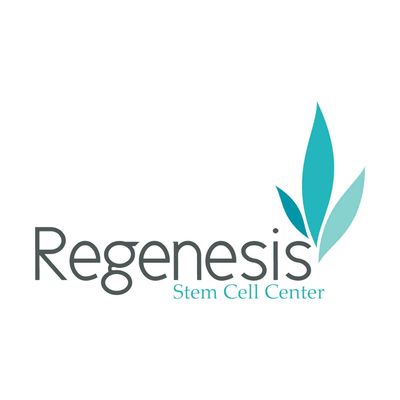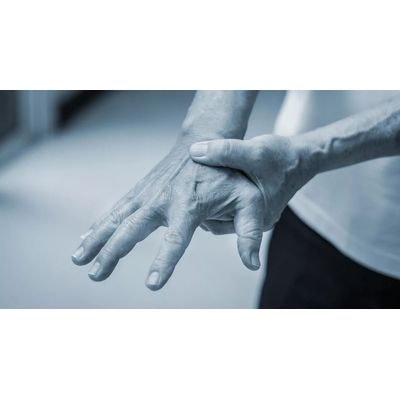

- Home
- Companies
- Regenesis Stem Cell Center
- Services
- Stem Cell Therapy for Arthritis

Stem Cell Therapy for Arthritis
Comprehensive treatment for rheumatoid and osteoarthritis using state-of-the-art stem cell therapy. At Regenesis Stem Cell Center, Dr. Charles Lee offers state-of-the-art stem cell therapy to treat arthritis pain and inflammation. Our non-surgical approach has successfully provided relief for patients with moderate to severe pain from osteoarthritis, rheumatoid arthritis, and other types of arthritis. Patients choose stem cell therapy with Regenesis Stem Cell Center to address their arthritis because they want real pain relief without risky joint replacement surgery.
- Repair cartilage surfaces
- Regenerate some tissue
- Improve mobility
- Decrease pain
- Lessen stiffness
- Reduce muscle weakness
- Reduce pain from cracking joints
Arthritis is inflammation in the joints: knees, shoulders, hips, spine, hands, feet, elbows, or ankles. Chronic inflammation from osteoarthritis, often called “wear and tear” arthritis, wears down the cartilage between the ends of your bones. Rheumatoid arthritis is caused when your immune system mistakenly attacks your own body and deteriorates the lining surrounding your joints. Left unchecked, both osteoarthritis and rheumatoid arthritis can cause the bones themselves to deteriorate and can even affect other parts of the body. Current treatment options for arthritis are limited to rest, physical therapy, anti-inflammatory medications or steroid injections, and painful joint replacement surgery. Stem cell therapy for arthritis has a much more promising outcome.
Arthritis inflammation is the body’s attempt to attract your stem cells to a place in need of healing. Joints have a relatively low blood supply, so they do not heal well on their own. Stem cell therapy at Regenesis uses the body’s natural healing process, called regeneration, to provide relief from arthritis pain using your own stem cells.
If arthritis pain and inflammation are affecting your daily life, you should consider stem cell therapy, especially if you want to avoid complicated joint replacement surgery. Your current arthritis treatment plan may not be easing your pain or discomfort, or maybe a risky immune suppressant drug. A surgical procedure may be raising concerns for you about the complications of anesthesia, your age and mobility level, or the physical impact of the procedure itself. If you want a relatively safe and effective alternative option for treating your arthritis, you should consult with Dr. Lee about stem cell therapy.
Stem cell therapy harnesses the body’s natural healing process, called regeneration, to provide relief from arthritis pain and degeneration. It is much less invasive than traditional joint replacement surgery since the therapy doesn`t require anesthesia, has no downtime, no incisions, and has a much quicker recovery time. Most importantly, stem cell therapy is effective. In a study published in the International Journal of Cell Biology, pain and mobility scores were more improved after two years for patients who had stem cell therapy treatments than patients who had total knee replacements. We have seen spectacular improvement in patients’ symptoms of arthritis, osteoarthritis, and rheumatoid arthritis, often dramatically improving their mobility and drastically decreasing their pain.
Dr. Lee will conveniently perform your stem cell therapy at the Regenesis Stem Cell Center in Huntsville, Alabama. Since arthritis-inflamed joints are complex and sometimes severely damaged systems, we will need to find your exact diagnosis. Before moving ahead with your stem cell therapy, Dr. Lee will review your medical history, conduct a thorough medical examination, and order imagery, and perform an ultrasound to pinpoint the areas of your body that have been damaged by arthritis. Using this information, we can recommend a comprehensive treatment plan.
If your treatment plan includes stem cell therapy, the first step will be to prepare your own stem cells and platelet-rich plasma. Your stem cells first form at conception. Eventually, they give rise to all the different cell types in the body. At Regenesis, we use the entire entourage of your bone marrow stem cells including a specific type of stem cell known as a mesenchymal stem cell (MSC). MSC’s can divide into a variety of important cells necessary for repair and regeneration including cartilage, ligaments tendons, bone muscle, and fat. Your own bone marrow contains abundant reserves of mesenchymal stem cells. Along with powerful stem cells, our exclusive system for stem cell therapy includes using platelet-rich plasma that we concentrate from your blood. These platelets release growth factors that stimulate healing in injured and damaged tissue or bone and activate stem cells.
On the day of your stem cell therapy, with oral or IV sedation, Dr. Lee will use a local anesthetic and carefully remove bone marrow containing your stem cells. In our lab, bone marrow is processed, concentrated and the portion containing the mesenchymal stem cells is then removed from the sample. The processing takes about two hours, and you wait comfortably in our clinic while we work. Next, after additional mild sedation, Dr. Lee will use real-time fluoroscopy and ultrasound to inject your own live stem cells and platelet-rich plasma into the precise areas we have identified as inflamed or damaged by arthritis, such as the joint bone, cartilage, ligaments, tendons, muscle, or soft tissue. For arthritis that affects multiple areas of your body, we often include a tissue infusion of stem cells as part of our protocol. The arthritis-inflamed areas in your body attract the stem cells, enabling your body to repair areas that are difficult or even impossible to reach via a traditional injection.
The stem cell therapy injections take about 20 to 40 minutes to complete. Your body`s natural regenerative capacity is initiated by the stem cells and platelet-rich plasma, which begins working immediately to heal and repair areas of injury and inflammation. Following the procedure, there is no downtime or rehabilitation stay and you can expect the same function and mobility as when you arrived that day. The damaged tissue or bone will repair itself over the next three to six months, but you may see pain relief much sooner.
